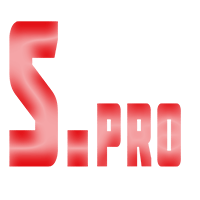What Is Platform Engineering, and What Does It Do?
In a PaaS implementation, the customer is generally responsible for everything above the operating system and development platform level. You will be responsible for installing and maintaining any additional applications you will need. The database platform may be supplied for you, but you will be responsible for the data. If there are any problems with the data, you will be able to implement any direct data fix you might need to perform. With the release of version 3.0, the framework has matured to a stage where complete security tools can be built around it. Re-written in Ruby, it now exposes APIs, which can be used to extend and modify the capabilities to incorporate the output from other tools such as Nmap and Nessus.
The hospital itself does not necessarily know of the benefits of such a tool and cannot pay for it, therefore the government acts as an intermediary. Data-mining support PivotTable Service has been extended to support the new data-mining capabilities of Analysis Services. Steve Fenton is an Octonaut at Octopus Deploy and a six-time Microsoft MVP with more than two decades of experience in software delivery.
Document potential solutions.
The findings were related to the three ecosystem levels of the framework, i.e. platform owners, developers and end-users. The various elements of the framework were tested against the case study to see where thy are present and where there were additional components that had to be added. From this preliminary evaluation it became evident that the inventory framework could be successfully applied to a developing country health platform. This provided a starting point for tailoring the inventory framework specifically to the SA health context. It is envisaged that the proposed framework could contribute to the increased and sustained adoption and use of health platforms.
An essential element is the database—it should not only be adequately extensive, flexible, and secure but also of a specific kind that aligns with your business objectives. The selection of the database type is influenced by a multitude of factors, such as the nature of data, scalability requirements, anticipated load, the balance of read-to-write actions, the programming language used, and budget constraints. Below are technical and non-technical factors you need to keep in mind when building a SaaS application. The article is based on the Master’s thesis of HH under the supervision of SSG and CWIP. All three authors actively and significantly participated in the drafting of the article. To illustrate the roles of the two groups, consider for example the case where the government of a SSA country identifies the need for a digital health tool in a government hospital.
Network Platforms
However, the resulting applications provide a high level of dependability and usefulness, making them a well-liked option for both developers and consumers. Conclusions Good platform processes have always embodied the principles laid down by the regulatory authorities in QbD. Lonza’s current platform process has achieved great success through the application of these principles. Over time the tools for implementing the principles of QbD have become more sophisticated. The development of the next-generation platform processes is taking advantage of many of these new tools to increase the quality of the offering to our license holders.

This may mean that the platform is divided into sub platforms for various supply network actors and provide specific services to them as needed. The platform owner is also responsible for the ecosystem health and should investigate methods of evaluation and measuring the ecosystem health. The ‘ecosystem and environment’ part refers to the ‘who’ and ‘where’ of platform development. It includes four general elements and three SSA specific health-related elements. Platform owners should carefully select their ecosystem partners and actively build the ecosystem based on this vision.
Harvard Business Review
Cross-platform app development creates software that can be run on multiple platforms. For example, a cross-platform mobile app will run on iOS and Android, and a cross-platform desktop app will run on macOS, Linux, and Windows. Our research identified four essential capabilities that are vital for successful platform development (see Figure 1). Applications that are cross-platform use a single codebase to run on various platforms and devices.

As a consequence, we still know surprisingly little about how platforms emerge and what essential capabilities they need to become successful. As we can see, cross-platform app development has several benefits for companies looking to expand their market reach or swiftly deploy software on many platforms with limited time and financial resources. A cross-platform strategy also offers the chance to create an MVP to evaluate the idea’s feasibility. The need for specialized platforms and programming language expertise makes native app development more time- and money-consuming than alternative app development techniques.
Digital Platform Development Lifecycle
The module lead ensures scale and innovation while the platform lead ensures optimal architecture and integration of the modules as well as circulation of feedback to module leads (Exhibit 3). For the overall success of a product, companies must also strike the right balance between commonality and differentiation across products. The portfolio strategy lead, along with the modular strategy lead in collaboration with platform and module leads, shoulders this responsibility. A whitepaper published on Best Practices for Successful Mobile App Development by eInfochips can be found very helpful to give insights into challenges and best practices for mobile application development. Cross-platform app development, one of the most well-liked software trends, involves making apps that function effectively across several operating systems, obviating the need to create distinct app versions for each platform.
- In Uganda, on the other hand, most people will not have access to or cannot afford medical aid and therefore a different strategy will be required.
- Oracle’s consolidated management software, Oracle Enterprise Manager (OEM) Grid Control, can monitor and manage all components in a data center.
- A platform owner should carefully consider possible formal and informal control mechanisms [97], the different openness dimensions available and support structures.
- The case was thematically investigated with regard to its strategic management, the technology platform and architecture as well as its user-centric design approach.
The different models appealed to different customer segments and gave Kodak twice as many products as Fuji, allowing it to capture precious retail space and garner substantial market share. Our platform development lifecycle is complemented by the maturity levels from the Capability Maturity Model Integration (CMMI). CMMI is a process improvement tool that helps organisations streamline process improvement and encourage productive, efficient behaviours that decrease risks in software, product and service development. Platform engineering improves developer experience and productivity by providing self-service capabilities with automated infrastructure operations. Platform engineering is trending because of its promise to optimize the developer experience and accelerate product teams’ delivery of customer value.
Platform Engineering vs. DevOps: How Are They Different?
A technology platform is therefore a central part of such an ecosystem and vice versa. It enables development teams to manage infrastructure components more quickly and at scale. By utilizing IaC within their platform engineering initiatives, organizations can automate resource provisioning and standardize workflows. The advantages that platform engineering provides over traditional software development methods as well digital platform development services as DevOps processes have led to intense interest among organizations with software development capabilities. In fact, 93 percent of organizations say platform engineering is a step in the right direction, according to the Puppet report. Organizations looking to address their challenges with DevOps need to understand what platform engineering is and how it enables an evolution in software development processes.

Many companies have already completed the journey toward modularity or have made major strides in this direction. But owing to advances in connectivity and the Internet of Things, we believe that many companies will have to find ways to update and upgrade products outside of their normal development cycles. Take automobiles, which historically had a product life cycle of seven years https://www.globalcloudteam.com/ (the time between a predecessor and a new car model). OEMs will have to explore ways to adapt functions “over the air,” as Tesla has done with its suspension system, or incorporate much later in the development process a special feature that the competition introduced. Companies can tackle some of these challenges using modules that can be refreshed during a product’s life cycle.


